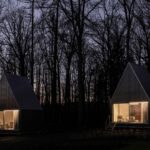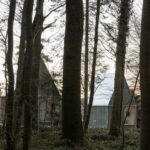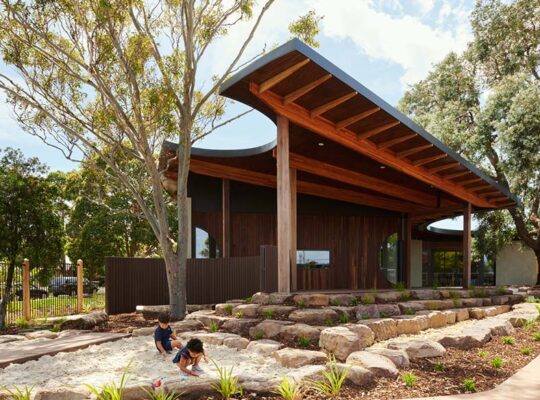Project Overview
The densification initiative at Domaine de la Roseraie aims to expand the site’s tourist accommodation capacity and enhance its amenities. The project unfolds in four phases, including the restoration of the manor house and existing 19th-century greenhouse, construction of ten guest houses, and the addition of a thermal bath facility.

Architectural Response to the Site
The typological and architectural decisions are deeply rooted in the site’s characteristics. The centerpiece is a cruciform manor house perched on a pedestal, adapting to the terrain, complemented by three annexes from later periods. The project also acknowledges a notable greenhouse and a forested edge overlooking the valley and bordering a Natura 2000 zone and a Roman camp.
Integration of Existing Structures
The manor house remains central to the project, serving as the hub for flows and management. Its foundation is expanded to accommodate the new thermal space, drawing inspiration from the typology of the old palestra to address concerns of privacy and environmental impact.
Phase One: Guest House Development
The initial phase focuses on constructing the first two guest houses, strategically positioned to enhance the promenade from the Domaine to the Roman Oppidum. Situated atop the property’s heights, these units are accessible from existing pathways and capitalize on the presence of the greenhouse.

Innovative Design Approach
Each guest house is meticulously designed to minimize environmental impact and maximize resilience. Installed on piles, they are easily dismantled if necessary. The facades feature profiled textured U-glass, establishing a dialogue with the surrounding structures and landscape. Detailed design elements leverage the three-dimensional geometry of prefabricated glass components to create innovative corner details.
Conclusion: A Synergistic Approach
The Roseraie Guesthouse project exemplifies a harmonious blend of architectural innovation and environmental stewardship. By respecting the site’s heritage while embracing modern design principles, it sets a precedent for sustainable development in tourist accommodation.
























